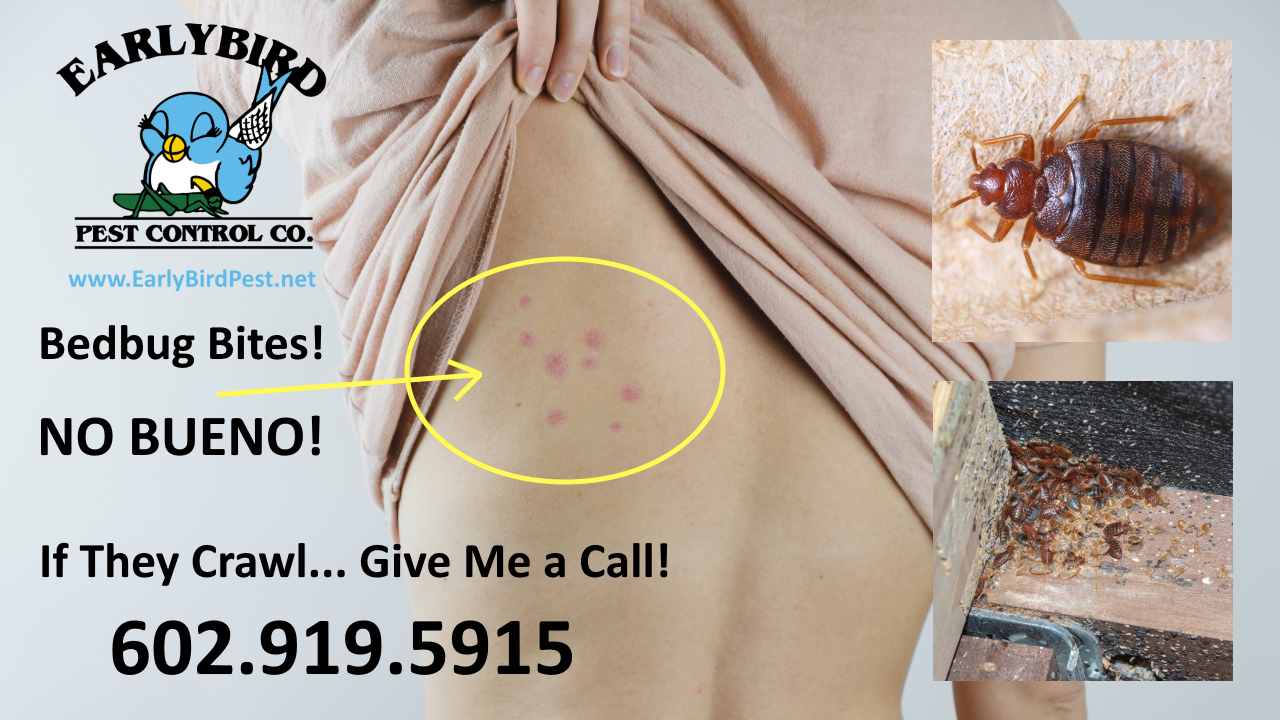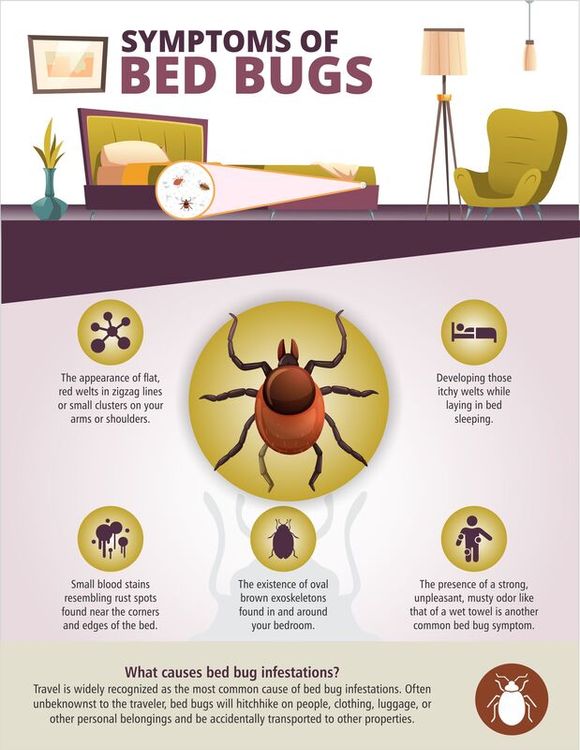Get Educated Concerning the Kinds Of Bug Control Approaches and Their Benefits for Property Owners
Recognizing the various parasite control techniques offered to property owners is important for effective parasite management. From chemical and biological strategies to mechanical and social practices, each technique offers one-of-a-kind benefits that can considerably affect both health and wellness and ecological safety and security. Homeowners who are well-informed can make tactical options that not only address bug problems yet also enhance the overall quality of their living environment. As we explore these methods even more, it becomes clear that the decision-making process includes greater than just instant results; it touches on long-term sustainability and health. What variables should affect these crucial decisions?
Chemical Bug Control Techniques
Chemical pest control approaches are a critical part of integrated insect management approaches for home owners seeking effective remedies to pest invasions. These methods entail the application of chemical materials created to eliminate or hinder insects that threaten personal effects, health and wellness, and comfort. Usual chemicals utilized include pesticides, herbicides, rodenticides, and fungicides, each customized to target specific bugs.
The primary benefit of chemical pest control is its fast effectiveness; several formulations supply immediate results, lowering pest populations dramatically in a short time. In addition, developments in chemical formulations have brought about products that are a lot more eco-friendly and have reduced poisoning degrees for non-target organisms when used correctly.

Biological Pest Control Strategies
All-natural parasite control approaches have acquired prominence as property owners look for safer and much more lasting choices to typical chemical techniques. Biological pest control methods use natural killers, parasites, or microorganisms to manage parasite populations properly. This technique is not just ecologically friendly yet also decreases the danger of injury to non-target types, consisting of useful pests and wildlife.
One of the most usual biological control techniques involves introducing all-natural predators into the setting. As an example, ladybugs can be used to manage aphid populaces, while nematodes target soil-dwelling pests like grubs. Additionally, parasitoids-- organisms that reside on or within a host-- can be employed to manage details pest types by laying eggs inside them, inevitably leading to their demise.
One more strategy is using biopesticides, which are stemmed from all-natural products such as microorganisms, minerals, or plants (bed bug exterminator). These products can successfully target bugs while posturing minimal risk to people and family pets. Overall, biological insect control methods supply house owners with a reliable methods of pest management that aligns with ecological principles, promoting a healthier living environment while reducing reliance on synthetic chemicals
Mechanical Pest Control Strategies
Mechanical insect control techniques encompass a variety of methods that literally protect against or remove parasites without using chemicals. These methods are especially valuable for home owners looking for eco-friendly options while ensuring the safety of their home.
One usual technique is making use of barriers, such as internet, traps, and displays, which prevent parasites from going into homes or particular locations. Setting up home window screens can effectively maintain insects out, while making use of physical barriers around yards can discourage bigger bugs like rabbits or deer. Additionally, mechanical catches designed for rats can capture and get rid of these insects without the demand for harmful materials.
One more reliable method entails using mops and vacuums to remove bugs straight from surfaces. Normal cleaning and upkeep can significantly minimize pest populations by removing food sources and hiding areas. Employing devices like ultrasonic bug repellents can deter various bugs via audio waves that are unpleasant to them but inaudible to people.
Social Pest Control Practices
Social parasite control practices concentrate on customizing the setting and monitoring techniques to create conditions that are less for pest invasions. These techniques are fundamental in maintaining a balanced community and minimizing the dependence on chemical treatments. By modifying farming techniques, home owners can properly discourage insects while promoting plant health and wellness.
One typical technique includes crop rotation, which disrupts the life cycles of pests by changing the sorts of plants grown in a specific location (bed bug exterminator). This not just decreases pest populaces however likewise enhances soil health. In addition, intercropping-- planting diverse plants in proximity-- can confuse bugs and minimize their ability to locate their favored host plants
Water management is one more important element of cultural practices. Correct watering methods can prevent standing water, which offers as a reproduction ground for mosquitoes and various other pests. Furthermore, keeping tidiness in and around the address home, such as routinely removing particles and food waste, can considerably reduce parasite tourist attraction.
Incorporating these social practices right into an extensive pest monitoring technique permits property owners to create a setting that naturally prevents insects, therefore click this site enhancing the performance of other control approaches while promoting lasting horticulture and landscaping.

Integrated Pest Administration Approaches
Integrated Pest Administration (IPM) represents an alternative strategy that incorporates various strategies to efficiently handle bug populaces while decreasing ecological impact. This approach integrates biological, cultural, physical, and chemical practices to achieve sustainable pest control. By evaluating pest populations and their natural enemies, IPM emphasizes monitoring and identifying pests before implementing control measures.
Among the core concepts of IPM is using limits, which establish the level of pest activity that necessitates treatment. This makes sure that therapies are used only when essential, reducing the reliance on chemical pesticides. Biological control techniques, such as introducing all-natural predators or bloodsuckers, job in combination with cultural techniques like plant rotation and habitat manipulation to interrupt pest life cycles.
Moreover, IPM urges the usage of least-toxic chemical choices when intervention is essential, focusing on products that posture marginal danger to non-target microorganisms and the setting. For house owners, embracing IPM comes close to not just enhances the efficiency of bug management yet also advertises a healthier living environment, promoting biodiversity and lowering chemical exposure. Ultimately, IPM equips property owners to make enlightened decisions that stabilize bug control with ecological obligation.
Conclusion
In final thought, comprehending the different insect control methods empowers homeowners to make informed decisions pertaining to pest monitoring. Each strategy-- click to find out more chemical, organic, mechanical, social, and integrated insect administration-- provides distinct advantages that provide to different needs and preferences.
Recognizing the numerous bug control techniques available to homeowners is essential for reliable bug administration.Chemical insect control methods are a critical part of incorporated insect monitoring approaches for property owners seeking reliable options to pest invasions. Overall, organic parasite control methods provide home owners with an effective means of bug management that straightens with environmental concepts, promoting a much healthier living atmosphere while reducing dependence on synthetic chemicals.
Social pest control techniques focus on changing the environment and administration techniques to produce conditions that are less helpful to pest invasions.In verdict, understanding the different pest control approaches empowers house owners to make enlightened decisions pertaining to pest management.